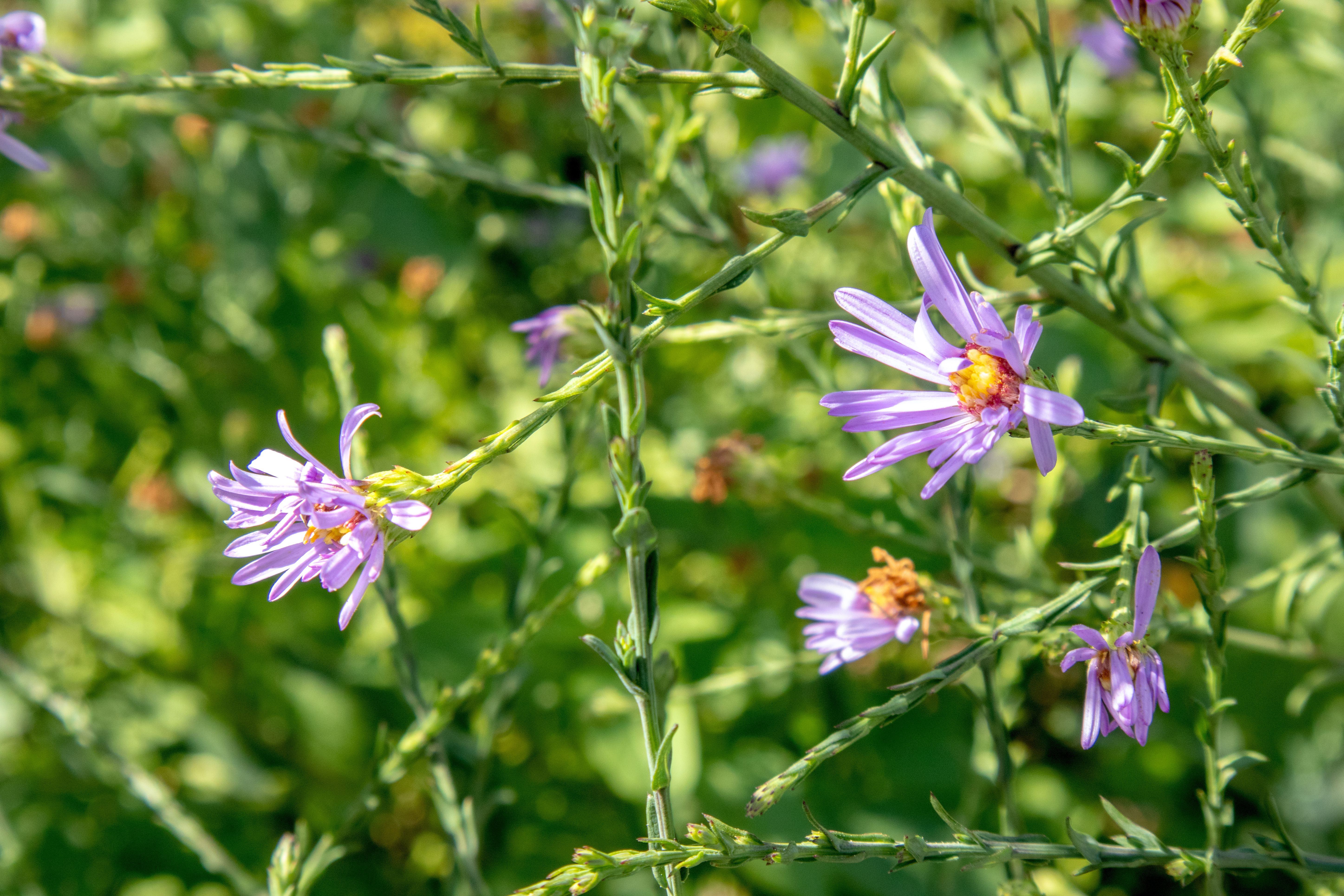What is blooming in Liberty Park: Autumn
Liberty Park, the one-acre elevated park at WTC, is home to over 20 pollinator plants. Every season, there are plants that bring an array of different features to enjoy. With staggered blooms from spring to fall and other supportive qualities, each plant plays a role in sustaining the bees, butterflies, and other pollinators that visit the park.
Here are a few highlights of what is currently in bloom (or will be) this autumn:
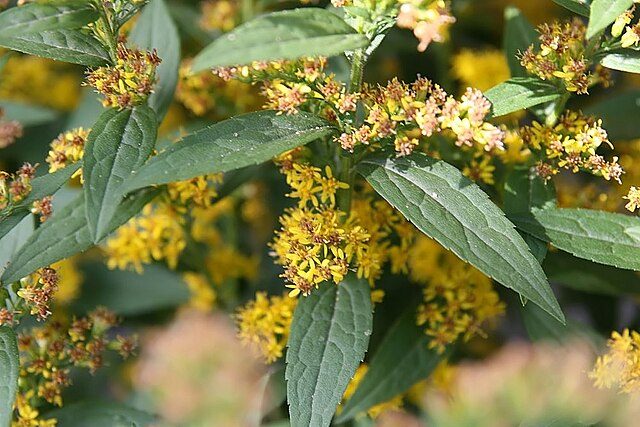
Fireworks Goldenrod burst into bloom in late summer and continues into fall, lighting up the garden with bold yellow flowers.
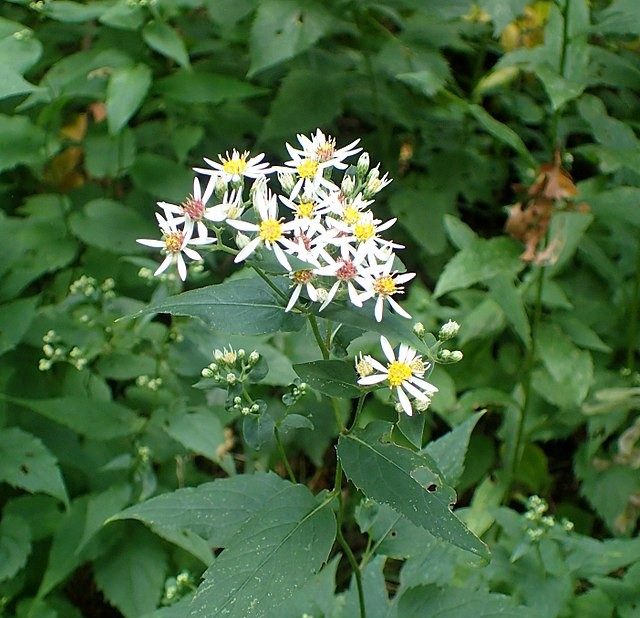
White Woodland Aster adds beauty in late summer to fall with clusters of white flowers and yellow centers that turn red after pollination.
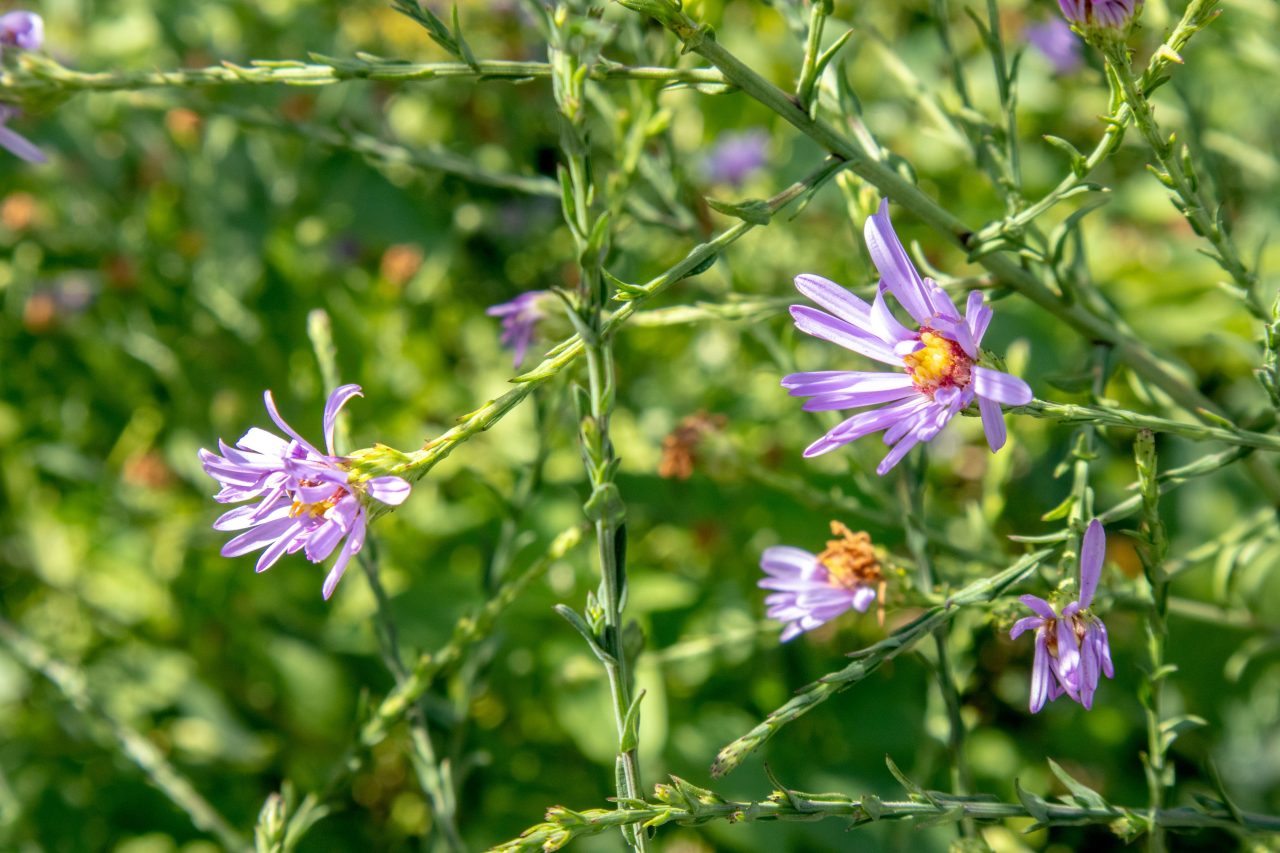
Smooth Blue Aster starts blooming in late summer and continues into fall. Its blue flowers add a lovely cool tone to the later season.
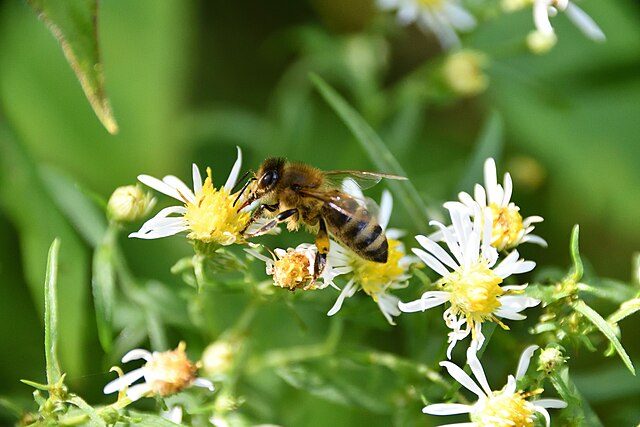
White Heath Aster and Heath Aster both bloom in the autumn with white flowers that help extend the blooming season well into cooler months. They are both late-season flowers. They feed butterflies, including migrating Monarchs, and are loved by specialist bees such as mining bees, digger bees, and fairy bees. Bumblebee queens feed on these flowers before going into hibernation. Traditionally, Indigenous Peoples used these in sweat lodges for herbal steam during ceremonies.
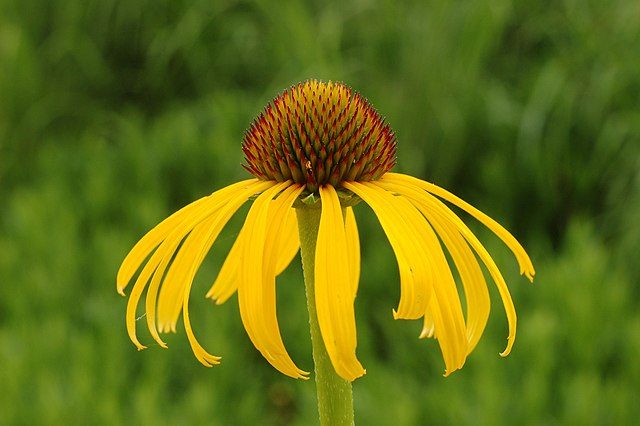
Yellow Coneflower is native to dry prairies and savannas. It has stiff and rough-feeling coarse leaves, and showy yellow flowers which have droopy soft yellow rays and is a seasonal plant that blooms in summer to autumn. These flowers provide overwintering sites for bees and food for seed-eating birds. These are favorites of many native bees, small butterflies, beetles, flies and wasps. It is the larval host to the silvery checkerspot butterfly, wavy-line emerald moth, and the common eupithecia moth.
Stay tuned for the following blog posts in the winter about the next plants in bloom!

